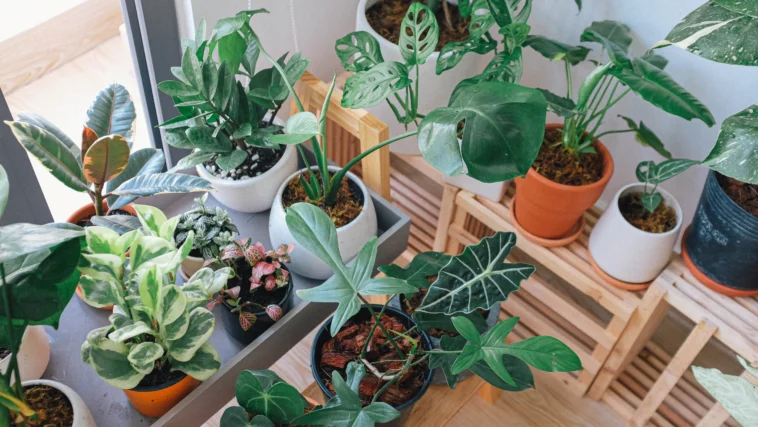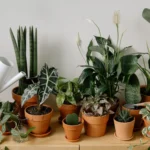The majority of people who keep houseplants have at some point experimented with moving their plants outside. Possibly your plant wasn’t growing so well, so you decided to place it outdoors since “plants normally live outside; perhaps this will restore its health.” You’ve undoubtedly already learned that the majority of houseplants are referred to as houseplants because they cannot survive outside the home.
But what causes this, and are there any notable exceptions to the rule? Are there any kind of houseplants that can be grown outside? Because the response to this question is not a straightforward yes or no, but rather a “it depends,” we are going to focus on this topic as we move through the rest of this article.
There are specific circumstances in which you are permitted to move your houseplants outside; the following is a summary of some of such circumstances:
- You now reside in a climate that is comparable to the natural environment in which the plant was found.
- Your houseplant is one of the few plants that can survive the winter.
- It’s the middle of summer, and the temperature is rising.
We are going to go over each of these scenarios, and we will determine whether or not they apply to you. If it does, there is a chance that you will be able to move your houseplants outside. If none of these apply to your current circumstances, you are unable to move your houseplant outside, and if you do so, it is quite possible that the plant will perish. In addition to that, we will discuss other options to relocating houseplants to outdoor spaces.
Table of Contents
The natural habitat of the plant
If you reside in an environment that has a climate that is very similar to the environment in which your houseplant normally develops, then there is a good probability that you will be able to successfully move your houseplant outside without any complications. Your houseplant will have little trouble adjusting to life outside and may not even need to go through the process of acclimating to its new surroundings.
If you reside in a climate comparable to your plant’s native home, it may even thrive better outside. It will feel at home and will likely flourish in the open air. The following are some examples of climates that are somewhat comparable to those found in the native habitat of the houseplant:
- You reside in a tropical region, which means that you are able to cultivate plants such as Alocasias, Monsteras, and Philodendrons outside.
- You reside in a desert: Outside, you are able to cultivate plants like cactus and succulents.
- You are a resident of the Mediterranean region: Outside, you are able to cultivate spider plants and ficus trees.
Clearly, the kind of plants that can be grown outdoors depend on where you reside. If you reside in a region that is warm but also very dry, you may still be able to grow tropical plants outside of your home; however, you will need to water your plants quite frequently in order to ensure that they receive enough moisture.
If you live in the native habitat of your plant, you won’t have to do anything to take care of it since the environment will do it for you. If you do not live in the natural habitat of your plant, however, you will have to.
Plants that are winter hardy
If you reside in a region with a cold temperature, such as Northern Europe, the northern portion of the United States and Canada, or in the Southern hemisphere sections of South America, it is far too cold for tropical plants to be grown outside, particularly during the winter months. However, this does not always indicate that you cannot relocate any of your indoor plants to an outdoor location. You won’t run into any issues relocating your indoor plants to the garden in the winter if they are winter hardy, which means they can withstand temperatures as low as -40 degrees Fahrenheit.
If you bring any plants that are not hardy in the winter outdoors during the spring, autumn (fall), or winter months, the temperature outside will be too low for them, and as a result, your houseplants will most likely perish. On the warmest days of the summer, you may be able to move some of your houseplants outside, but this is the only opportunity that presents itself.
On the other hand, if you reside in an area that has a cooler environment, it is advisable to store your plants indoors for the whole year. Instead of taking the chance of bringing your plant outside, it is safer to keep it inside where you have complete control over its environment.
Taking plants outside in the summer
If you live in a cooler region, the only time of year when you have a chance of successfully moving your houseplants outside is on a hot summer day. Even if you are able to do so, the question “Can you bring your houseplant outdoors?” does not have a certain “Yes!” response.
The weather on that particular summer day will determine whether or not you can move your indoor plant outside to enjoy the warm weather. If you want to put a succulent outside so that it can soak up some rays, you must first ensure that the weather will not be rainy on that particular day. Rainfall in little amounts is not an issue; but, if it rains all day, your succulent will receive an excessive amount of water.
This, on the other hand, would be an ideal scenario for a Monstera. It thrives in conditions of high heat and humidity. If you take care to ensure that there is adequate drainage in this area, your Monstera plant should be able to thrive outside during this period. Simply make sure that it is moved indoors before the sun goes down since that is when the temperature will begin to drop significantly.
Some other options to putting your plants in the garden
There are several good reasons to move your plants outside, including:
- You should move your plant outside so that it may receive more sunlight.
- Taking your plant outside can help you get rid of any pests.
- Taking your plant outside to catch rainwater
However, these aren’t the only ways you can support your plants. To ensure that your plants receive an adequate quantity of sunshine, you can, for instance, position them in close proximity to a window facing south (in the northern hemisphere) or north (in the southern hemisphere) .
Putting plants on a window sill allows them to receive more sunshine.
One of the most major benefits of moving your plants outside is the reduction in the number of pests they attract. However, if you are unable to do so because you do not reside in the appropriate climate or the weather is not ideal, you are not without choices .
It’s possible that moving your houseplants outside in an effort to get rid of pests would cause your plants more harm than the pests ever did. It is thus recommended that you treat your plant indoors and give it some time to recuperate. Your plant may suffer from shock if you move it outside, and there is a decreased chance that it will ever fully recover as a result.
It can seem like a good idea to move your plant outside so it can collect rainfall, but doing so puts it in harm’s way more than it needs to. If you wish to water your plants with rainwater, collect it in a rain collecting system, let it stay in your home for at least a day to reach room temperature, and then water your plants using a watering can. It’s possible that the rainwater that falls from the sky is too chilly for your plants to use.
The delicate roots of your plants might suffer damage and develop root rot as a result of this. When you leave your plant outside in the rain, there is no effective way to control the amount of water it receives since there is no way to govern how long it is exposed to the elements. If you have good drainage, you can get away with doing this, but it will be much simpler if you just use a watering can to water your plant.
Conclusion
It may sound like a good plan to move your houseplants outside, but the answer to the question of whether or not you should really carry it out is not always cut and dry. Before putting your indoor plant outside, keep the following points in mind:
- Do I reside in an environment that is comparable to my plant’s natural habitat?
- Will my plant withstand cooler temperatures?
- Is the temperature comfortable, and is it dry or humid?
It is not always necessary to move your houseplant outside, even if you have the ability to do so. To aid your plant, there are several things you can do without having to move it outdoors for an extended length of time.
Frequently Asked Questions
Can you bring houseplants outdoors?
It is dependent on the native habitat of the houseplant you have as well as the location in which you reside. When these two conditions are met, you will be able to move your houseplants outside. If not, you should probably refrain from doing so because it may be harmful to your plant.
Should I bring my houseplants outdoors to get rid of pests?
Even if you want to get rid of pests, it is not in your best interest to leave your houseplant outside. If you want to get rid of pests within your home, treat your houseplants with neem oil and/or soapy water. It’s possible that exposing your houseplants to the elements will cause more damage to your plants than the bugs ever could.
Can you bring houseplants outdoors in the summer?
Bringing your houseplants outside on a warm and dry summer day is unlikely to hurt them. You may do this to provide them with additional sunshine or warmth. However, placing them on a bright window sill will provide them with more sunlight and warmth.
Photo by Huy Phan: https://www.pexels.com/photo/green-leaf-plant-with-pots-3076897/



